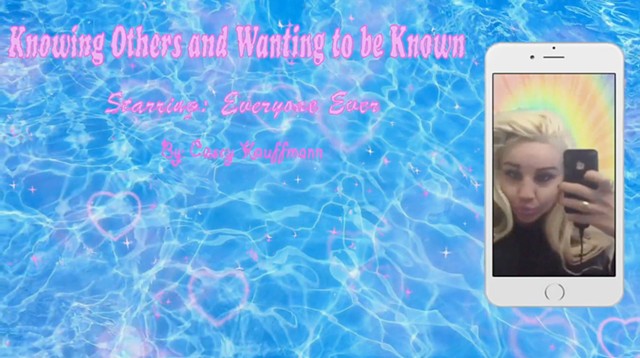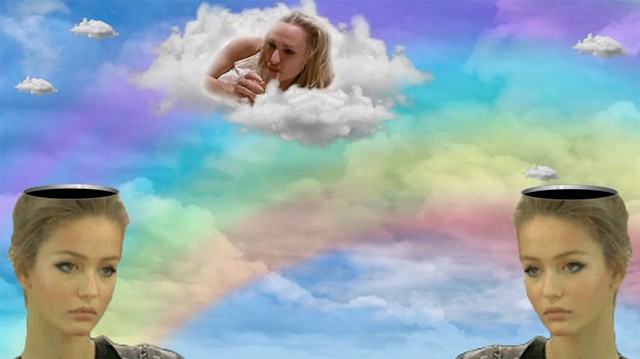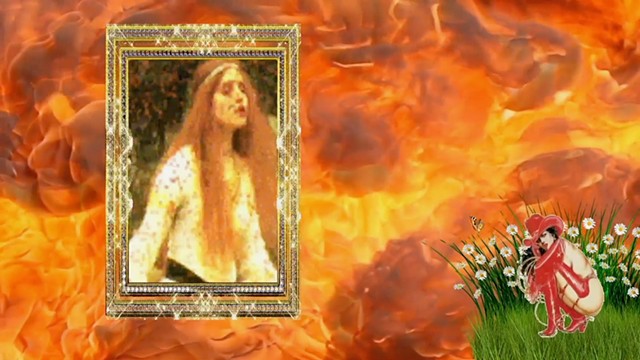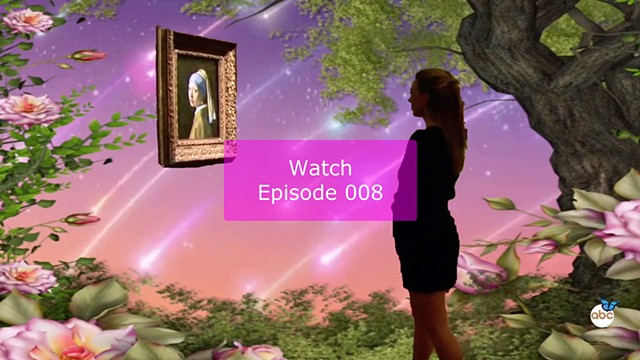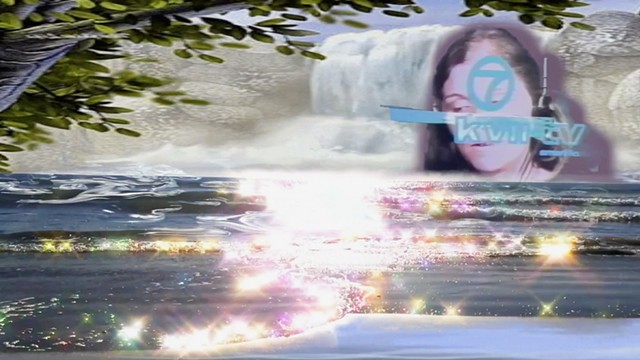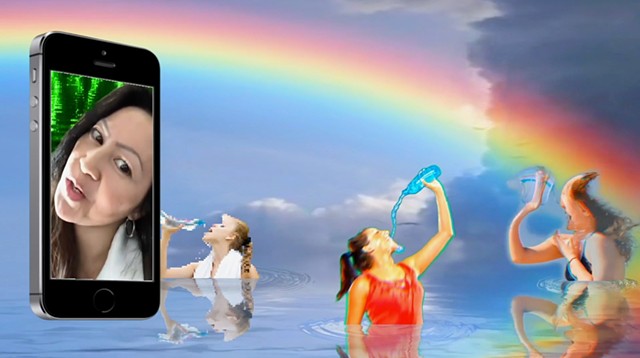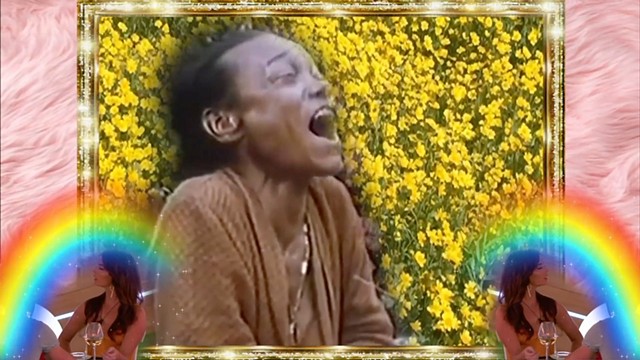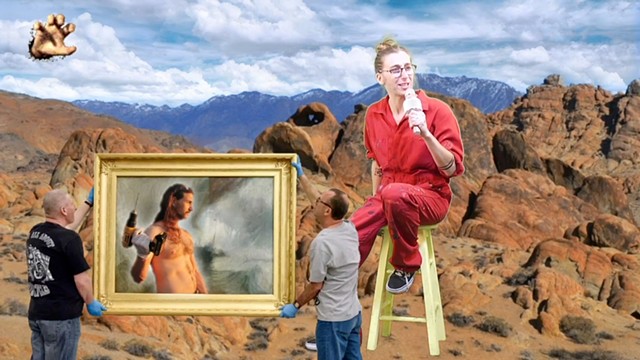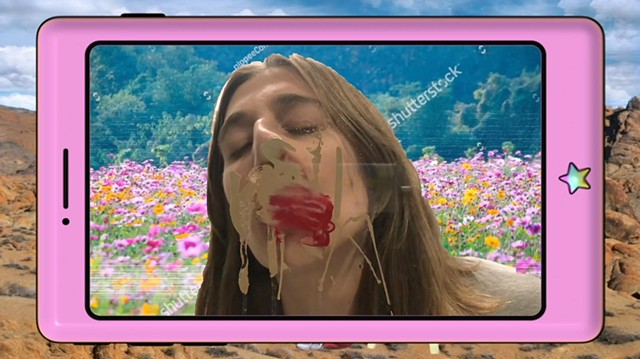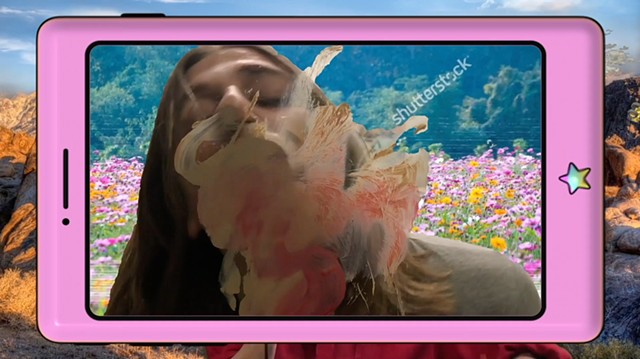Knowing Others and Wanting to be Known
Stills and episodes (008 and 011) from Knowing Others and Wanting to be Known
Knowing Others and Wanting to be Known is a video collage piece created using found video, After Effects, and a variety of phone-based applications. The video consists of a series of short thirty seconds to three minute long narratives strung together to create one long piece. This establishes a work that functions as an episodic continuum open to the infinite addition of narratives, similar to a social media feed. This episodic form generates a binge-watching experience, one suited to the Instagram sized attention span. Knowing Others and Wanting to be Known can engage the viewer for thirty seconds or they can sit for twenty minutes and, like a youtube rabbit hole or a netflix binge-watching session, consume a large amount of information and stimulation. The use of a timeline construction references the archival nature of the online performance of self. Posts happen in and reflect real-time, they serve as an archive of the content creators experience. Working through this episodic process results in the continued historicization of my own practice and the ability to create my own personal mythology over time. I can curate episodes together, mix and match them, and show part or all of them at once. Just like @uncannysfvalley, I have created a system of working and a conceptual framework that can last a lifetime which serves as both an archive and a body of work. Knowing Others and Wanting to be Known is both an extension of my Instagram practice in construction and my thesis research in conceptual intent. My thesis paper titled Social Media, Reality Television, and the Contemporary Performance of Self unearths the coevolution of reality television and social media within post 9/11 surveillance culture. The found video used in the piece demonstrates the undeniable contribution of these popular culture phenomena to the contemporary performance of self particularly for femme-identifying people. This video serves as a meditation on representations of gender in art history, popular culture, and the internet. My objective is to recontextualize and transform elements from within these corporate architectures developed as platforms of self-representation blurring lines between public and private experience.
